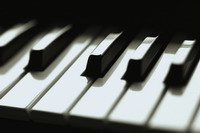Piano Sheets > Eduardo Di Capua Sheet Music > Oh Marie (ver. 1) Piano Sheet
Oh Marie (ver. 1) by Eduardo Di Capua - Piano Sheets and Free Sheet Music

About the Song
Eduardo Di Capua wrote Oh Marie (Marie, Mari in Italian) which has been recorded by many singers, both classical and otherwise. Eduardo di Capua composed some of the most famous Neapolitan songs, including "O Sole Mio," "Santa Lucia Luntana," and "Torna a Surriento." He studied at the San Pietro Conservatory in Majilla, and an 1887 encounter with the poet Cinquegrana inspired him to write his first songs. It wasn't in Italy but on a trip to Odessa in 1898 when he composed "O Sole Mio." This would become an unofficial, romantic Italian anthem, never more so than during the 1920 Olympic Games in Antwerp. The conductor of the band couldn't find the music to the actual Italian national anthem, so instead he played "O Sole Mio."
Di Capua's reputation was posthumously clouded somewhat in 2004, when a Torino judge ruled that Alfredo Mazzucchi (1878-1972) was entitled to be listed as co-author of "O Sole.
Download this sheet!
About the Artist

Random article
Getting access to free sheet music for Christmas Christmas is one time when everyone wants to learn how to play the piano. There are so many Christmas carols, hymns and other compositions played. In such a situation, you will find it useful to get free sheet music especially with the Christmas compositions in them.
New age and classical
One of the best advantages about free sheet music is that you can get both classic as well as New Age Christmas musical notes. That means you will be able to play the old time classical compositions, carols etc. and the new artists compositions. The New Age Christmas musical notes are very poignant and lovely and playing these piano notes is sure to stir hearts. One of the drawbacks about New Age Christmas music sheets is that they are very difficult to access. Most New Age albums do not sell too well and hence the demand for these is lesser. In this context, getting access (More...)
